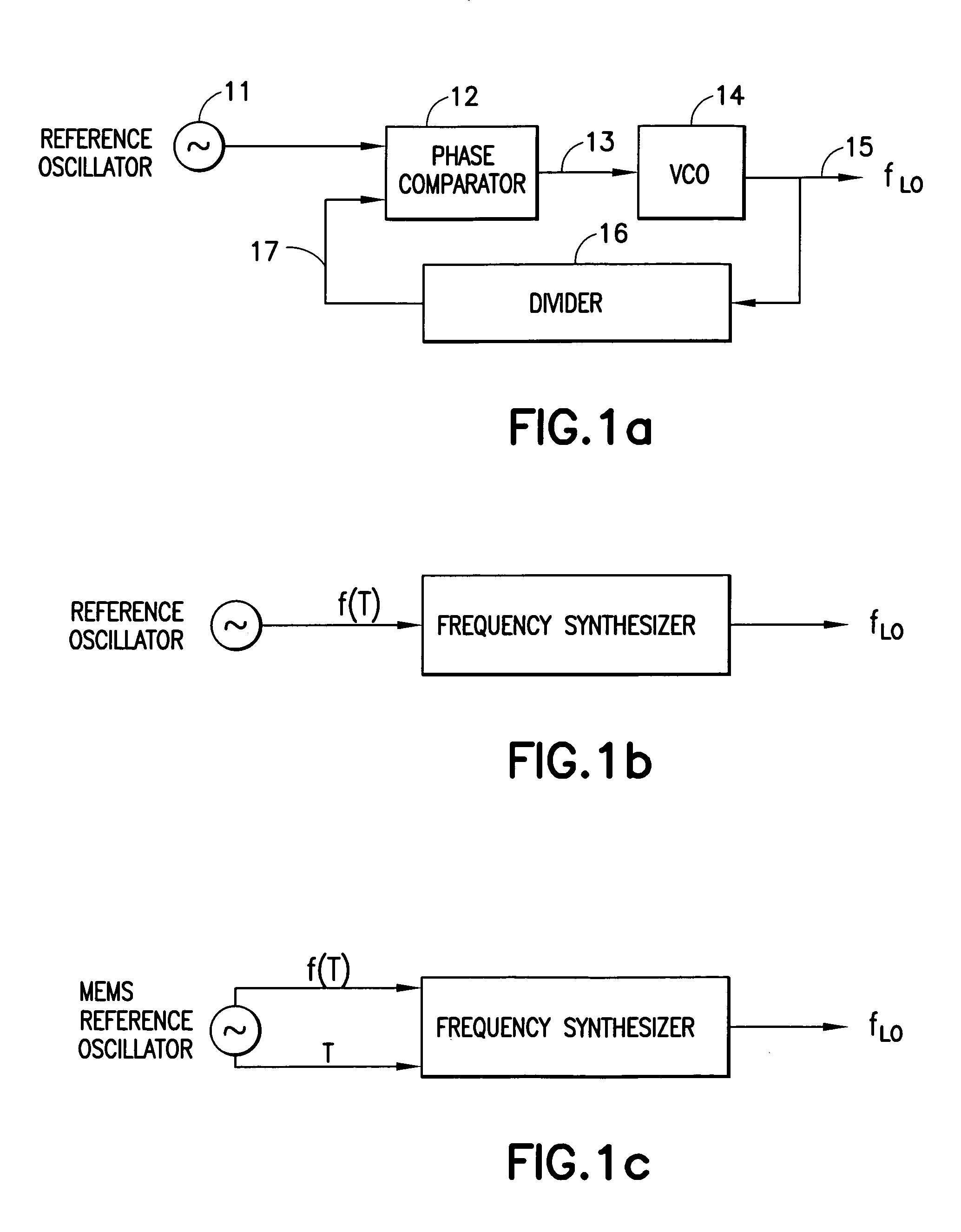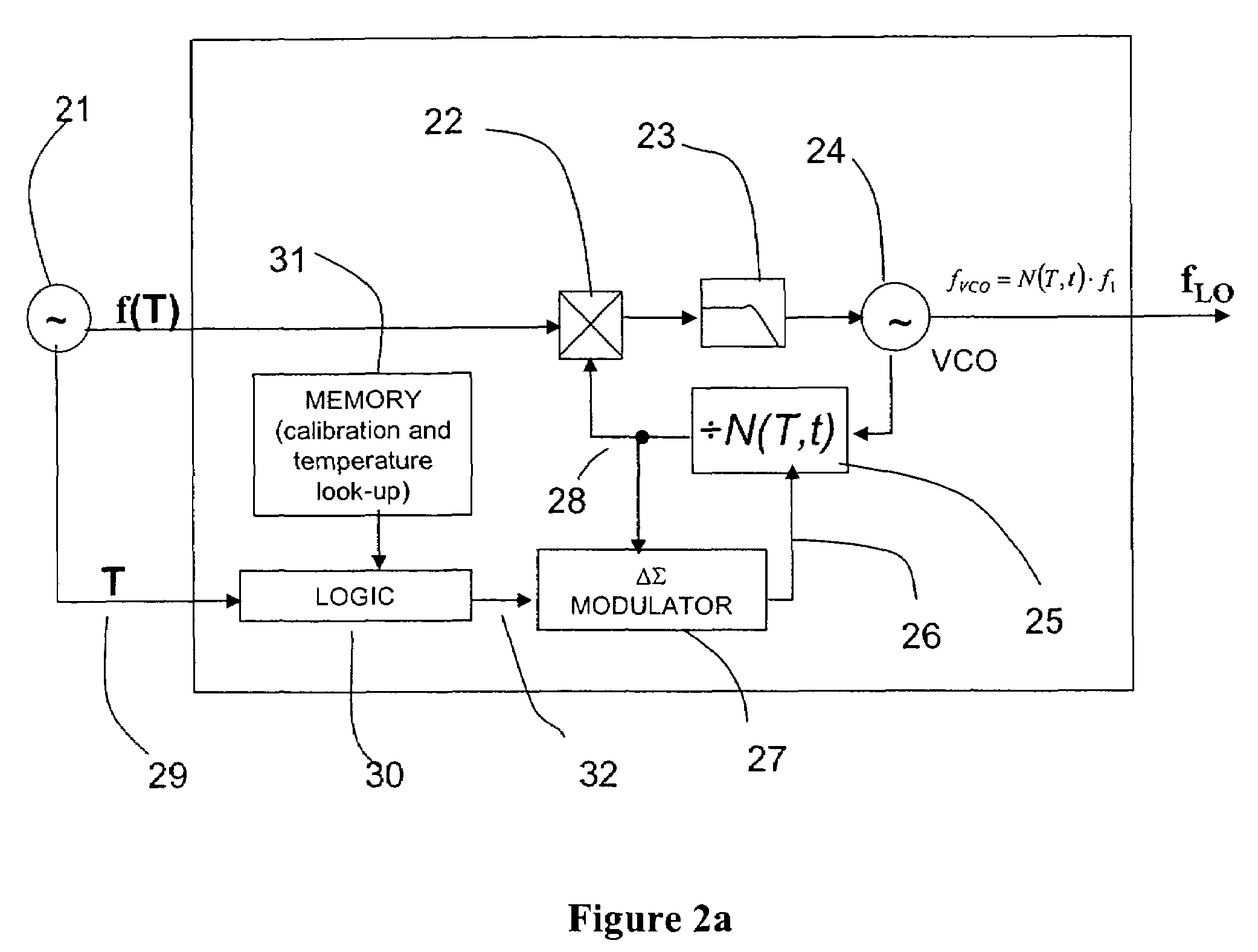Multi-mode frequency synthesizer with temperature compensation
a frequency synthesizer and temperature compensation technology, applied in the direction of heat measurement, instruments, optical radiation measurement, etc., can solve the problems of reference oscillator modules, difficult monolithic integration with transceiver modules that are otherwise typically based on highly integrated solutions, and the complication of silicon-based microresonators in frequency synthesizers, etc., to achieve better optimization and low phase noise
- Summary
- Abstract
- Description
- Claims
- Application Information
AI Technical Summary
Benefits of technology
Problems solved by technology
Method used
Image
Examples
Embodiment Construction
[0030]The present invention relates to a method for stabilizing the frequency of a frequency synthesizer by using a reference oscillator coupled to a voltage controlled oscillator (VCO) using a phase locked loop (PLL) or a frequency comparison control, wherein a reference MEMS oscillator is utilized for stabilization of the VCO, whereby by measuring the temperature T of the MEMS resonator and by using its known frequency vs. temperature function fr(T), the output frequency becomes a precisely defined quantity that can be used as a reference in frequency synthesizers.
[0031]In the following three stabilization methods are presented for MEMS-oscillator-based frequency synthesizers.
[0032]According to a first method, with a block diagram depicted in FIG. 2a, the VCO 24 generates the LO-frequency (e.g. at 1 GHz) fLo. The MEMS-reference oscillator 21 is typically operated at a significantly lower frequency (e.g. at 10 MHz). The VCO output frequency is divided in the divider 25 in order to ...
PUM
 Login to View More
Login to View More Abstract
Description
Claims
Application Information
 Login to View More
Login to View More - R&D
- Intellectual Property
- Life Sciences
- Materials
- Tech Scout
- Unparalleled Data Quality
- Higher Quality Content
- 60% Fewer Hallucinations
Browse by: Latest US Patents, China's latest patents, Technical Efficacy Thesaurus, Application Domain, Technology Topic, Popular Technical Reports.
© 2025 PatSnap. All rights reserved.Legal|Privacy policy|Modern Slavery Act Transparency Statement|Sitemap|About US| Contact US: help@patsnap.com



